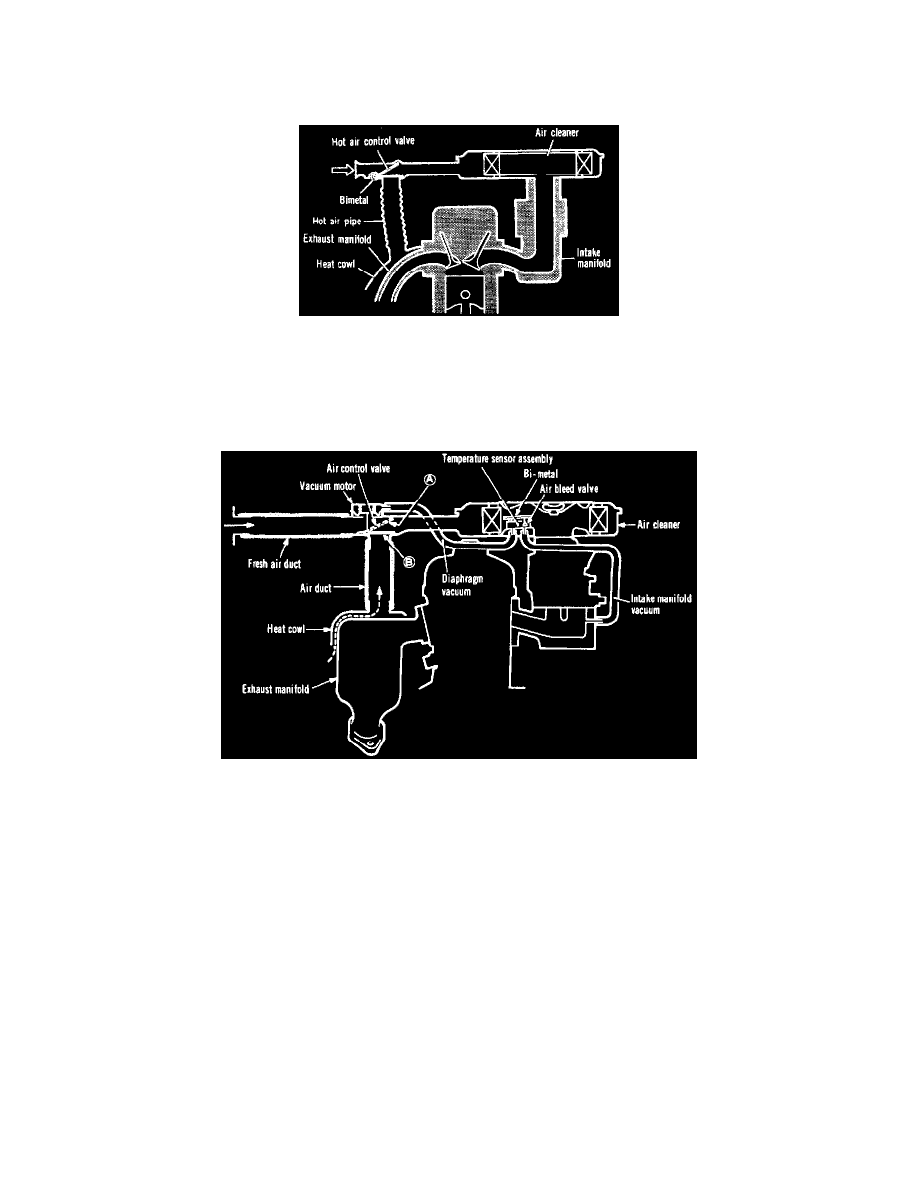D50 2WD L4-156 2556cc 2.6L VIN 7 2-bbl (1982)

Thermostatic Air Cleaner: Description and Operation
Vehicles for these years employ either a mechanical or vacuum system. These systems can be easily identified as the vacuum system will have two
vacuum hoses attached to the underside of the air cleaner housing, one of which connects to a vacuum motor located atop the housing air intake
while the other connects to the intake manifold.
Fig. 3 - Heater Air Intake System
In the mechanical system, Fig. 3, the hot air control valve or mixing door is controlled by a bimetal located at the valve. The bimetal responds to
underhood air temperature and opens and closes the valve accordingly. When underhood air temperature is below 41° F., the valve permits heated
air to enter the air cleaner for combustion. If underhood air temperature is between 41° and 108° F., air flow will occur through both the hot and
cold air circuits. When air temperature is above 108° F., air flow for combustion will be through the cold air circuit only.
Fig. 3a Heated Air Intake System
In the vacuum system, Fig. 3a, the hot air control valve is controlled by a vacuum motor temperature sensor combination system which responds to
intake manifold vacuum and temperature inside the air cleaner housing. When temperature inside air cleaner is below 84° F., air bleed valve
remains closed, forcing intake manifold vacuum to be applied to diaphragm of vacuum motor which then opens air control valve and allows heated
air to enter. If air cleaner temperature is between 84° F. and 113° F., air flow will occur through both hot and cold air circuits. When air cleaner
temperature is above 113° F., the air bleed valve is fully opened, causing air control valve to close fully regardless of intake manifold vacuum,
thereby allowing only cold air to flow.
